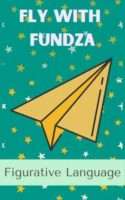We create a pun when we use homophones and homonyms to play with language to be clever or funny. The humour comes from the double meaning of the word. (See below for a reminder about homonyms and homophones.)
Examples:
Why did the spider go to the computer? To check his web site. This pun plays on the homonym ‘web’ (spider web and web site). The word ‘web’ has more than one meaning.
A bicycle can’t stand on its own because it is two-tired. This pun plays on the homophones ‘tire’, (Work tires me out) and ‘tyre’ (My car has four tyres). Both words sound the same, but are spelled differently.
Writers play with the sounds and meanings of words and phrases to entertain the reader and to grab the reader’s interest. You will often find puns in newspaper headlines, advertisements, jokes and riddles.
Reminder about homonyms and homophones:
- Many words in English have more than one meaning. We call these homonyms. Example: date. (What is the date today? Let’s go on a date. I love eating dates!)
- English also has many words that sound the same, but have different meanings. We call these homophones. Examples: ate/eight (I ate supper at eight o’clock.)
In order to understand a pun, it’s important that you understand the meaning of all the words in the sentence.

